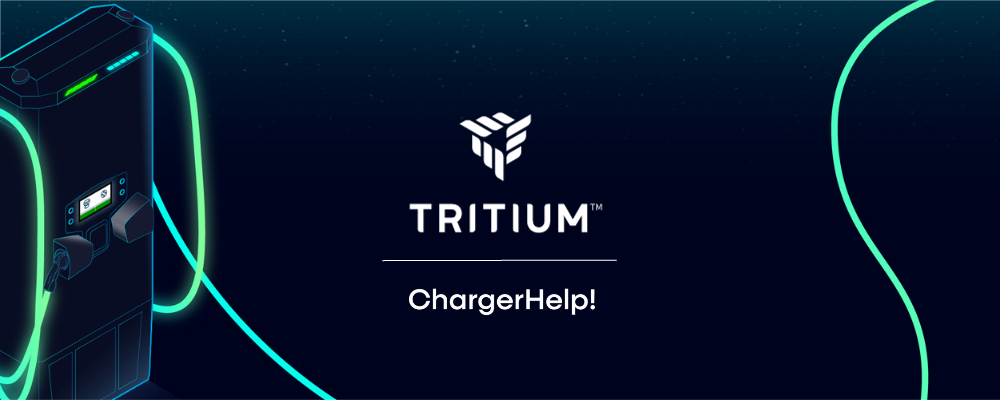Plugged in With Tritium: Maintaining Charging Infrastructure With ChargerHelp!

ChargerHelp! is an electric vehicle supply equipment (EVSE) and infrastructure service provider in Southern California. They provide crucial support for direct current (DC) and alternating current (AC) fast chargers and help maintain charging infrastructure across the region. ChargerHelp! is a trusted Tritium partner and we’re proud to feature them for our first Plugged in With Tritium partner spotlight for National Drive Electric Week.
About ChargerHelp!
ChargerHelp! is an EV Charging Reliability Management Company. ChargerHelp! deploys advanced technology solutions that enhance EV infrastructure reliability while fostering workforce development through inclusive training programs for individuals from diverse communities.
The role of electric vehicle supply equipment (EVSE) technician was non-existent until very recently. ChargerHelp! trains employees in-house and offers workforce development services through agencies and community groups. In addition to increasing EV charger uptime, ChargerHelp! strives to remove barriers so that people in disadvantaged communities have access to opportunities in operations and maintenance in the EV industry.
The EV market is growing rapidly, and charger malfunctions and downtime can disrupt this growth. ChargerHelp! provides a swift and effective solution to keep charging stations operational, delivering our vision of reliable and accessible charging infrastructure and helping to build the future of sustainable transportation.
How does ChargerHelp! service DC fast chargers?
ChargerHelp! EVSE technicians work on DC fast chargers performing services like commissioning, diagnostics, power electronics, rebuild and repair, electronic component replacement, firmware configuration and update, Coolant replacement and system repair, cable replacement, retractor system replacement and repair, and preventive maintenance. Technicians test the DC fast chargers with an EV at the conclusion of service. They activate a charge and process a transaction to ensure that everything is operating as designed.
What are the biggest challenges for servicing/repairing DC fast chargers?
Interoperability and cross-functionality of the chargers, vehicle, and network are some of the biggest challenges when repairing DC fast chargers. Networked EV chargers have many different data exchange failure points and precise diagnosis of operational problems require a combination of accurate data combined with in-field experience.
Having skilled EVSE technicians to perform the work is of the utmost importance. With the relative newness of EV charging and the rate at which it is growing, it’s important to hire and train.
How is Tritium helping you overcome those challenges?
Tritium, like ChargerHelp!, is motivated to achieve the highest uptime. As their partner, ChargerHelp! receives detailed issue descriptions and support through the Tritium Network Operations Center. Tritium is a leader in ensuring reliable services are available in this fast-growth industry.
We take pride in the capabilities that our EVSE technicians have because of our training programs. In addition to our extensive training and specialized curriculum, they also receive manufacturer-specific guidance. Tritium holds learning sessions for our company periodically so that as our team grows, we are always armed with the tools to ensure that corrective maintenance is done swiftly and to specification.
Why is it important to drive electric?
There are many reasons to drive electric: environmental, health, and economic. The transportation sector significantly contributes to greenhouse gas emissions and EV’s, especially when charged by renewable energy, can play a crucial role in reducing emissions and mitigating climate change.
On a more micro level, tailpipe emissions are hurting people in our communities. Children living in urban areas have a higher risk of developing asthma due to exhaust, and here in Los Angeles County children of color have the highest rates. Electric vehicles produce zero tailpipe emissions and reduce the pollutants that can cause respiratory problems and other health issues where we live, work and play.
In addition to reducing the health risks associated with emissions, increased EV driving has economic benefits. It shifts consumption away from imported oil towards domestically produced fuel sources leading to more stable energy costs. These costs become more predictable and lower with EV’s, which also have a lower cost of ownership. Those savings are big for people who have significant commutes and for businesses and community fleets.